More Robust Literacy Instruction for People Who Use AAC
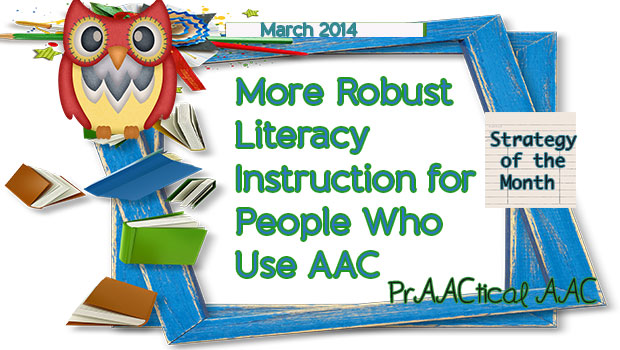
We love learning about AAC and literacy from resources that have a ‘presume competence’ philosophy, that provide research support, and that include specific teaching guidelines. With these ideas in mind, we love the Literacy Curriculum found on the Literacy Instruction Website by Janice Light and David McNaughton at Penn State. There are specific guidelines for providing literacy instruction to individuals with severe communication impairments. There is a specific curriculum to tell you what skills to teach, reasons for teaching those skills, how to teach the skills, and videotaped examples of teaching the curriculum. There is listed research support that you can use to understand the rationales for the skills you are teaching as well as provide evidence-based information about why you are choosing the approach.
This post is intended to provide an introduction to the Literacy Curriculum. For comprehensive information go to the Literacy Instruction Website by Janice Light and David McNaughton.
This literacy approach is intended for learners with special needs who have difficulty using speech to communicate. The learners can have diagnoses that include autism, cerebral palsy, down syndrome, multiple developmental disabilities, and developmental apraxia.
Direct instruction and instructional techniques are used to teach specific literacy skills. Typically 2-4 skills are taught at one time. Modeling, guided practice, independent practice and multiple frequent opportunities for meaningful reading experiences are implemented during direct instruction.
Here is a brief introduction to the component parts of the direct literacy instruction curriculum:
The curriculum guidelines include methods for teaching the following direct literacy skills:
Sound Blending– Building words from individual sounds by blending the sounds together in sequence. For example, the learner blends d, o, g, to form the word dog. The learner is presented with the sounds and points to a picture/symbol of the target word.
Phoneme Segmentation- Breaking words down into individual sounds. This is the reverse of sound blending. For example, the learner takes a word like hot and breaks it into it’s component parts h,o,t.
Letter Sound Correspondences– Knowing the sounds that correspond with letters and the letters that correspond with sounds. The curriculum suggests a letter/sound order for teaching and provides specific instructional tasks.
Decoding– Knowing how to recognize letters in a word, associate letters with sounds, hold these sounds in sequence memory, blend these sounds together to know the word, and retrieve the meaning of the word.The tasks for decoding involve reading a written word and saying, signing, or pointing to a picture of the target word.
Shared Reading– Provides opportunities for the learner to apply decoding skills during meaningful book reading activities. The instructor begins reading and pauses at regular intervals for the learner to decode specific words through saying it, signing it, or using a speech generating device. Target words are highlighted to make it clear that when the instructor pauses, it is the learner’s turn to decode/read.
Sight Word Recognition– These are difficult to decode words that must be memorized. The instructor says the target sight word and the learner points to the written target word.
Reading Sentences and Simple Stories– This is the goal of early reading instruction and takes all of the individual reading skills such as tracking sentences, decoding, accessing meaning, processing words together to understand sentences, and relating the meaning of sentences to understand the whole story.
Reading Comprehension– Reading a story and understanding it. Reading comprehension requires knowledge of all of the previous specific reading skills. However, reading comprehension is built by frequently reading and talking about books, teaching vocabulary found in books, and using meaningful reading experiences for the learner.
Learn More with these AAC-RERC FREE Webcasts and Research Results:
- Maximizing the literacy skills of individuals who require AAC by Janice Light and David McNaughton.
- Improving literacy outcomes for individuals with autism spectrum disorders and limited speech by Janice Light and David McNaughton
- Research studies on the Literacy Curriculum were conducted by Dr. Janice Light and Dr. David McNaughton and funded by the National Institute on Disability and Rehabilitation Research (NIDRR) as part of the Rehabilitation Research Center on Communication Enhancement (The AAC-RERC) (grant # H133E030018).
Filed under: Strategy of the Month
Tagged With: literacy, Literacy Instruction
This post was written by Robin Parker

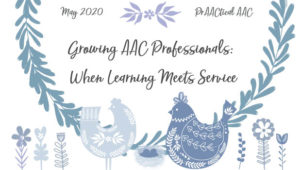
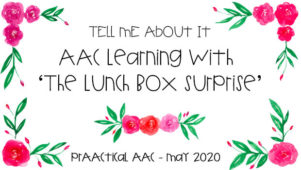
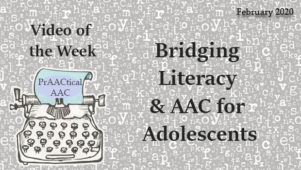
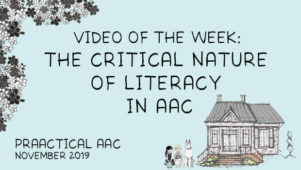
8 Comments
Thank-you. Thank-you for sharing this outstanding website. I am currently working with a student who uses a communication device and we have been discussing ways to teach her literacy skills. The strategies shared on the website were great and we will be able to use many of them. Is it possible to purchase the materials used in the curriculum?
Thanks for writing. I do not think this curriculum is available for purchase, but I will do some checking and let you know if I find anything. Most of the words targetted are specific to the learner, so pre-made materials may only help a little.
Heather, Mayer-Johnson’s ALL curriculum may be just what you are looking for. Here is the link: http://bit.ly/1njqivl.
Thank-you.
I have a question , Can I just use Janice C Lights method with my student or do I need a specific credential/ degree/ certification?
Beatrix, I think the reason that they posted the material online and published it in journals is so that we would all use it. I don’t think a specific credential is required, however, you may want to go directly to them to ask about that.
Do you know if Janice Light & David McNaughton’s AAC & Literacy website at PSU has moved? The links here didn’t connect and I can’t find it with a Google search.
Sally, I think they are aware of the situation and working on it. So solutions at the moment, but keep checking. I will post on our FB page (https://www.facebook.com/PrAACticalAAC) when they are back in action. 🙂